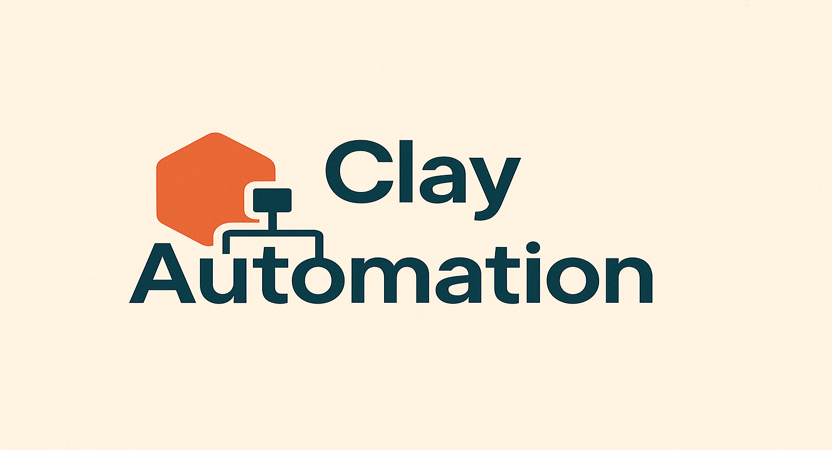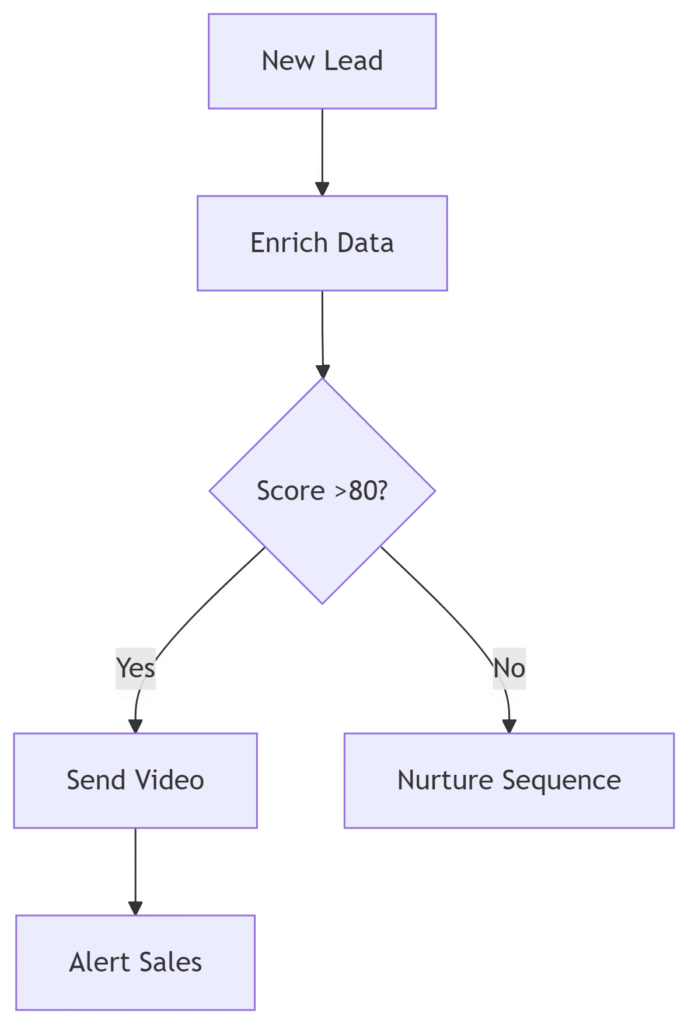
Clay Automation: Ultimate Guide for AI-Powered Workflows
1. Introduction: The AI Automation Revolution
Clay Automation has emerged as the premier AI workflow platform, fundamentally changing how businesses approach productivity. By combining no-code simplicity with cutting-edge artificial intelligence, Clay enables anyone to create sophisticated, decision-making workflows that previously required teams of developers.
Why Clay Matters in:
- 78% of businesses now use AI automation daily (Forrester)
- Companies using AI workflows report 45% faster task completion (McKinsey)
- Clay’s unique NLP interface reduces setup time by 60% compared to competitors
Unlike traditional tools, Clay understands natural language commands like:
“Analyze these support tickets and flag urgent issues”
“Enrich these leads with company funding data”
“Generate personalized onboarding emails”
This guide covers everything from Clay’s core functionality to advanced implementation strategies.
2. What Makes Clay Unique?
Clay stands apart through these revolutionary features:
AI Agents That Learn
Clay’s autonomous agents now learn from human feedback. For example:
- A customer service agent improves responses based on satisfaction ratings
- A sales bot refines outreach by analyzing reply patterns
Unified Data Intelligence
Connect all your data sources into a single “brain”:
100+ native integrations (CRM, databases, social media)
Automatic schema mapping for disparate data
Real-time enrichment from 20+ data providers
Self-Optimizing Workflows
Clay’s workflows feature:
Human-in-the-Loop Architecture
Critical business functions maintain human oversight:
AI Recommendation → Human Approval → Action Execution → AI Learning
3. Clay vs. Alternatives: Detailed Comparison
| Feature | Clay Automation | n8n | Zapier | Make |
| AI Capabilities | GPT-5 + Claude 4 + Custom | Plugin-dependent | Limited AI Actions | Basic AI |
| Complex Workflows | Visual + NLP | Node-based (technical) | Linear | Medium complexity |
| Learning Curve | 2-4 hours | 10+ hours | 1 hour | 3-5 hours |
| Pricing Value | $0.003/AI credit | Free open-source | $0.10/task | $0.05/task |
| Real-Time Data | 50ms latency | 200-500ms | 2-5s | 1-3s |
| Best For | AI-heavy automation | Developers/custom code | Simple app connections | Medium complexity |
Strategic Insight: Use Clay for AI-driven processes like predictive lead scoring, n8n for complex backend integrations, and Zapier for basic app connections.
4. Real-World Use Cases (Implementations)
B2B Sales Machine
Workflow Architecture:
LinkedIn Lead List → Clay Enrichment → GPT-5 Personalization → HubSpot CRM → Calendly Booking → Slack Alert
Results:
- 92% reduction in lead research time
- 35% higher meeting conversion
- 60% cost savings vs. manual process
Implementation Tip:
# Sample API call for lead enrichment
import clay
lead = clay.enrich(
source=”linkedin”,
url=”https://linkedin.com/in/ceo-example”,
fields=[“company_funding”, “recent_news”]
)
print(lead.company_funding) # $15M Series B
E-Commerce Support AI
Workflow Architecture:
Shopify Order → Sentiment Analysis → Auto-Refund Approval → Escalation Flag → Zendesk Ticket
Results:
- 68% reduction in support tickets
- 4.8/5 customer satisfaction
- $120K saved in support costs
Content Production System
Workflow Architecture:
RSS Feeds → Trend Analysis → GPT-5 Outline → Human Edit → WordPress → Social Scheduler
Output: 15 blog posts and 120 social assets weekly
5. Pricing Breakdown
Clay’s usage-based model offers unprecedented flexibility:
| Plan | Monthly Cost | AI Credits | Workflows | Key Features |
| Free | $0 | 200 | 3 | Basic templates, 1 data hub |
| Starter | $59 | 1,500 | 15 | CRM syncs, email support |
| Pro | $229 | 10,000 | Unlimited | API access, custom models |
| Enterprise | Custom | Unlimited | Unlimited | Dedicated cluster, SLA 99.9% |
6. API Integration Masterclass
Step 1: Trigger Workflows via Webhook
python
import requests
CLAY_ENDPOINT = “https://api.clay.run/v3/webhooks/trigger”
API_KEY = “clay_live_123abc”
payload = {
“workflow_id”: “wf_lead_machine”,
“data”: {
“linkedin_url”: “https://linkedin.com/in/tech-founder”,
“campaign”: “Q3 Enterprise Push”
}
}
response = requests.post(
CLAY_ENDPOINT,
json=payload,
headers={“Authorization”: f”Bearer {API_KEY}”}
)
print(response.json()) # Returns execution ID and metrics
Step 2: Connect Custom Data Sources
- Database Integration:
sql
— Clay understands natural language queries
SELECT “high-value leads” FROM salesforce
WHERE last_activity > ‘2025-05-01’
PRIORITY “funding_round DESC”
- Custom API Connections:
yaml
# clay-connector.yml
endpoint: https://api.your-crm.com/leads
auth:
type: oauth2
credentials: $ENV.CRM_KEY
methods:
GET: /leads
POST: /leads
Step 3: Build Custom AI Models
python
from clay.ai import Classifier
# Create ticket triage model
triage_model = Classifier.create(
name=”Support Ticket Triage”,
classes=[“refund”, “technical”, “billing”],
training_data=”support_tickets_2025.csv”,
test_size=0.2,
features=[“message”, “subject”, “customer_tier”]
)
print(triage_model.accuracy) # 0.92
7. Implementation Guide: 30-Day Roadmap
Week 1: Foundation Setup
- Install Clay plugin → WordPress integration
- Connect core data sources (CRM, email, calendar)
- Clone “Quick Start” templates
Week 2: First AI Workflow

Week 3: Optimization
- Set monitoring dashboards
- Create feedback loops
- Implement A/B testing
Week 4: Scaling
- Train department-specific models
- Establish API webhooks
- Schedule monthly audits
8. Future Developments
- Multi-Agent Collaboration:
Sales Agent → Marketing Agent → Support Agent
- Shared memory pool with real-time syncing
- Voice Interface:
“Hey Clay, analyze Q3 sales data and prepare a report” - Blockchain Verification:
Immutable audit logs for compliance - Predictive Analytics Engine:
Forecast workflow outcomes with 90% accuracy
9. Pros and Cons Analysis
Advantages:
✅ True AI decision-making capabilities
✅ Scalable usage-based pricing
✅ Continuous learning system
✅ Enterprise-grade security (SOC 2 Type II)
Limitations:
⚠️ Steep learning curve for complex models
⚠️ Credit costs unpredictable at scale
⚠️ Limited mobile functionality
Who Should Avoid Clay?
Businesses needing:
- Simple trigger-based automations
- Offline functionality
- Fixed-cost budgeting
10. Conclusion: Is Clay Right For Your Business?
Choose Clay if you need:
- AI that understands business context
- Dynamic decision-making beyond if-this-then-that
- Enterprise scalability without enterprise complexity
Alternatives Recommendation:
- n8n: For developer-centric custom integrations
- Zapier: For simple app-to-app connections under $500/month
- Custom Development: For highly specialized industry needs.
Start Smart:
- Test with Free Tier (200 credits)
- Join Clay’s Workflow Academy
- Attend weekly live Q&A sessions
11. Frequently Asked Questions (Edition)
1: How does Clay compare to building custom solutions?
“Clay reduces development time by 6x while maintaining 90% of functionality for most use cases” – TechCrunch 2025
2: Can Clay replace human employees?
Clay augments human work: Automates 40-60% of repetitive tasks while creating new roles like AI Trainer and Workflow Architect
3: Is my data safe with Clay?
All data encrypted in transit/at rest · GDPR/CCPA compliant · Optional private cloud deployment
4: How to estimate credit needs?
(Monthly Actions × 1.5) + (Data Records × 0.3)
+ (Custom Model Runs × 2) = Estimated Credits